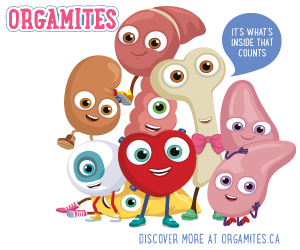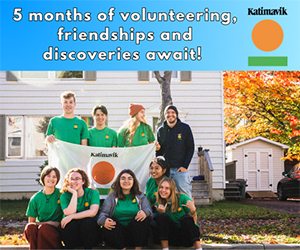London’s First Episode Mood and Anxiety Program focuses on early intervention — and experts say it could help reshape mental-health care for young people
By: Priya lyer, Courtesy of TVO, published May 28, 2019
Deana Ruston had struggled with anxiety since middle school, but her symptoms worsened in 2011, during her first year at Western University. “The transition to post-secondary was a big shock,” she says. While volunteering with a youth-mental-health organization, she learned about the First Episode Mood and Anxiety Program, in London, an early intervention service that provides resources for youth aged 16 to 25. There, she was diagnosed with generalized anxiety and depression. “FEMAP provided medication management, but, more importantly, the ability to talk to somebody about everything going on,” Ruston says. She credits the program with helping her through school. “With their help, I got to a point where I was doing really well on my own.”
At FEMAP — which is part of the London Health Sciences Centre — youth call in for services; they don’t need a physician referral. After an intake and assessment process, they can receive a combination of medication, talk therapy, or group therapy, depending on their needs. Services are provided by psychiatrists, psychologists, and social workers.
Between 2013 and 2015, demand for FEMAP services increased by 65 per cent. It’s the only program of its kind in London — or anywhere else in Canada — and the wait-list can be up to nine months.
Long wait times aren’t uncommon: according to Children’s Mental Health Ontario, children and youth in Ontario can wait, on average, two and a half months for counselling and psychotherapy services — in some areas, the wait can be as long as 18 months. A 2007 Health Canada report by the adviser on healthy children and youth estimated that, if young people are given access to timely and appropriate forms of support, up to 70 per cent of cases of mental illness can be managed, enabling them to participate fully in society. But without timely access to services, and with few resources available outside hospitals, experts say it’s far too easy for young people to fall through the cracks — and they’re trying to transform the system.
Founded in 2006, FEMAP encourages young people to seek help earlier in the course of their illness, when the chances of recovery are higher, says Elizabeth Osuch, its founder and medical director. “Because of a lack of community resources, and the stigma of mental illness,” she says, “young people often postpone seeking help until they can no longer function on their own. This is too late for efficient, cost-effective care.”
Early interventions are particularly important when it comes to young people, says Ashok Malla, Canada’s research chair in early psychosis and a professor at McGill University. Three-quarters of mental illnesses first manifest between 12 and 25. “Brains are rapidly changing,” he says, “and young people are stepping into the world for the first time. To prevent things from worsening, we need to catch illnesses now,” he says.
FEMAP was modelled on the London Health Sciences Centre’s Prevention and Early Intervention Program for Psychoses, established in 1997, which was one of the first of its kind in North America. “Early intervention began with psychotic disorders, like schizophrenia, and is backed by over 25 years of research,” says Malla, who led the LHSC program in 1997. Ontario was an early adopter of the model, and there are now 55 such centres across the province. But similar interventions for other mental illnesses have not developed as quickly. “We wouldn’t expect people with diabetes to wait till a crisis before intervening,” Osuch says. “Not so for mental illness.”
The results from FEMAP have been encouraging: according to a 2018 study published in The Canadian Journal of Psychiatry, those who received care from the program between 2009 and 2014 had lower rates of emergency-room visits one year after treatment than those receiving care elsewhere in the South West Local Health Integration Network. A 2019 study, published in Psychiatric Services, found that clients of the program between 2013 and 2015 reported significant improvement in their depression and function six months after treatment.
But such programs are by no means the norm: Ontario’s system doesn’t “directly address youth problems,” Malla says, and “the path to care for young people can be torturous, with long delays.” Some progress has been made: since 2016, Stella’s Place, in Toronto, has offered services to youth aged 16 to 29. In 2017, the government launched four Youth Wellness Hubs, which provide access to primary care, employment, housing, and other supports.
And, since 2014, Malla has been leading ACCESS Open Minds, Canada’s only nationwide research program dedicated to transforming youth-mental-health care. Thanks to a five-year, $25 million grant from the Canadian Institutes of Health Research and the Graham Boeckh Foundation, his team is developing a mental-health triaging system for youth aged 11 to 25. Under it, youth would be assessed within 72 hours and referred to appropriate community resources, such as FEMAP, within 30 days. Currently, the program is operating at 14 sites in six provinces and one territory — Ontario’s is located at the province’s Youth Wellness Hub in Chatham-Kent.
The next phase, which will involve ensuring that appropriate community programs are available for referrals in every region, will be the hard part, Malla says, as few programs exist, and the ones that do, such as FEMAP, are unique to a community. The project’s current funding will run out in September 2020, but existing sites will be sustained with public and private funding, Malla says. Any further expansion of the project, he notes, will depend on future provincial budgets.
Ruston, now 27, underwent surgery for thyroid cancer in 2015. “Because I was already diagnosed with anxiety and depression beforehand, I already had some coping mechanisms and knowledge of resources available,” she says. “I was actually able to reach back and connect with FEMAP once again and get back on my feet with that diagnosis as well — see myself through that first surgery phase.” In 2017, she completed a grief-counselling program and she now mentors youth, encouraging them to reach out early to prevent struggles from worsening. “With the right supports and programs,” she says, “it is possible to succeed.”











